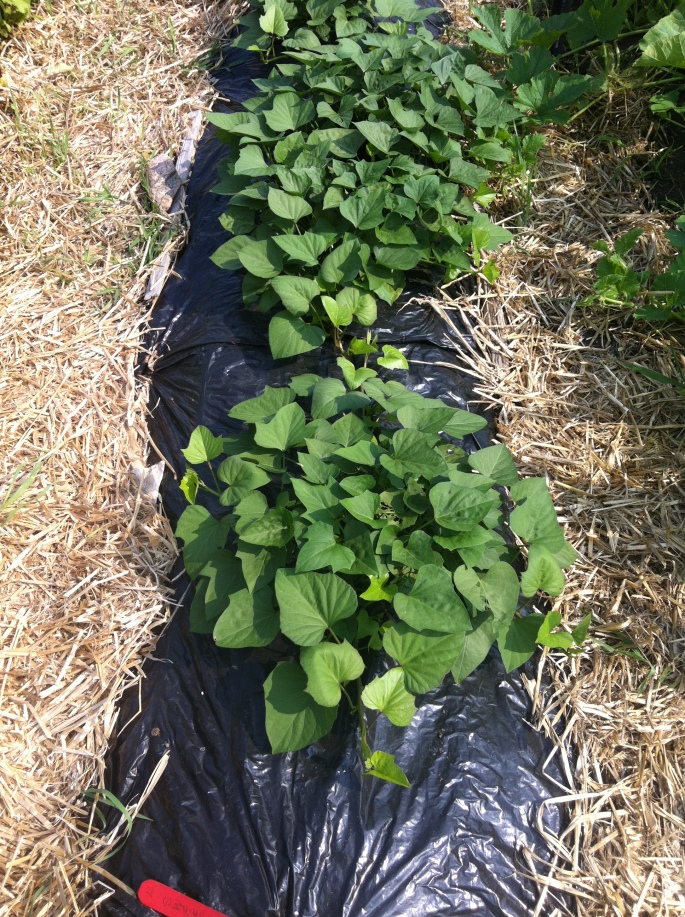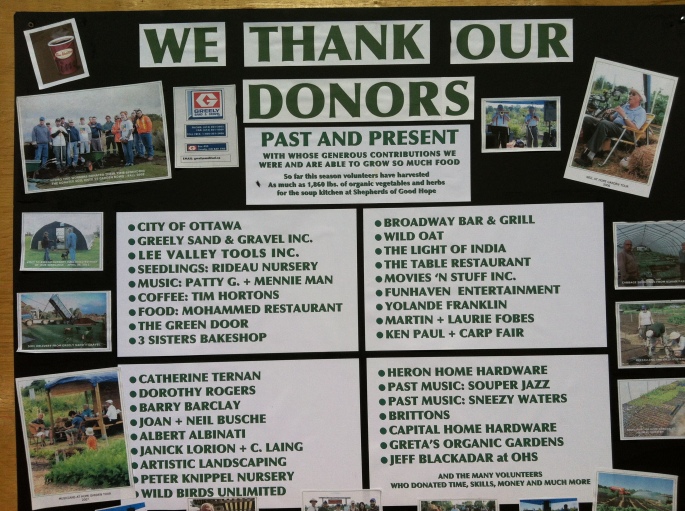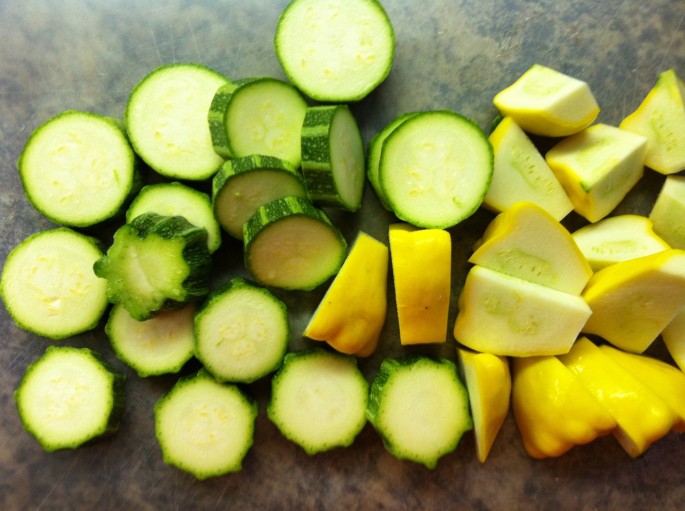Community/allotment gardening year five:
I have certainly thought about blogging about gardening during the past season but that’s as far as it got. Thinking about it. Don Marquis, an American poet and journalist said “procrastination is the art of keeping up with yesterday” . And while it didn’t happen yesterday, here’s the story of our experience with a brand new crop this year. Sweet potatoes.
Our growing/hardiness zone is 4B in Ottawa, ON. We had talked about growing sweet potatoes in previous years before but had concluded we weren’t in the right zone. That changed when we learned that a local organic seed distributor sold sweet potato slips. They aren’t available until June here. You plant them only after the risk of frost had passed.
We had intended on buying enough slips to fill an entire 20 foot row but when I learned about the steps you have to take after harvest, I bought enough for a half row as a first try. Here’s the dirt on growing sweet potatoes this past season:
- Tilled and mounded a 10 foot row. Laid a wide strip of black plastic over the row (sweet potatoes like warm soil) and secured it at the edges .
- Make a slit in the plastic every 2 feet and plant a slip.
- That’s it till harvest. How easy is that! Water and sunshine throughout the growing season and the vines grew and spread until you could no longer see the plastic. We were all very interested to see what, if any harvest would await us when the time came.
- Harvesting must occur after the first frost when the vines turn black. Here’s where we started to wonder if sweet potatoes were all that darling or if they were just plain finicky.
- Digging sweet potatoes is not that easy. We learned they grow vertically and try to find their way to the other side of the world. Down into the clay they went (some of them were 18-20 inches long). They bruise and break easily when bringing them out of the ground. There was a bit of exasperation when we started and found we had to scratch around a great deal with hand trowels to see if the potatoes had traveled hither and yon. We got better at digging with the garden fork after a hill or two. If the soil isn’t nice and loose the potatoes break. There were cheers when we removed potatoes in tact.
-

Success! We harvested 30-35 pounds of sweet potatoes from 5 slips. Not bad. But the story doesn’t end there. Sweet potatoes need to be cured. I looked for advice on how to cure then and found there were as many ‘recipes’ as there were advisors. Basically the potatoes must be kept in a place that is very warm (25-29C) and humid (85-90%) for 3 days or 7 days or maybe 21 days. What?? One consistent message was curing must occur-conversion of sugars and making it so they will keep longer. Avoid scaring or bruising the potatoes lest they start to spoil. I layered the potatoes between sheets of newspaper and put them in 3 containers in our downstairs bathroom. I covered each container with a garbage bag (thinking it would help with humidity) and then a blanket/quilt. A little heater helped keep the temperature up, as did having the lights on day and night. Once in a while I would turn on the shower to up the humidity. Such finicky darlings, sweet potatoes. I checked them regularly. The humidity never got as high as recommended (had a little temp/humidity gauge in the room). After 3 weeks we reclaimed the bathroom, wrapped the tubers individually in newspaper, storing them in a cool dark place and now hoping to have sweet potatoes for the next several months.
- We haven’t decided if we will grow them again next year. By spring the effort of harvest and curing this fall will be mostly forgotten and we will be enthusiastically entertaining thoughts of garden bounty.


























